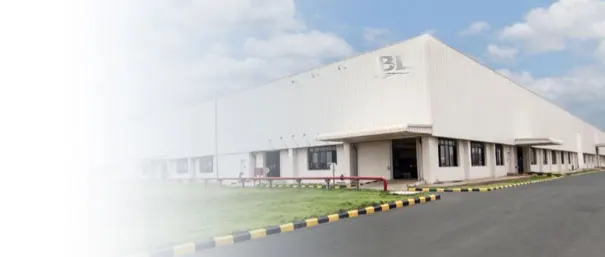GB/T 20Cr13 Stainless Steel: Martensitic Stainless Steel for Mechanical Components & Corrosion-Resistant Applications
GB/T 20Cr13 (UNS S42000) is a martensitic stainless steel grade widely used in applications requiring moderate corrosion resistance, high hardness, and excellent mechanical properties after heat treatment. With a chromium content of 12-14% and carbon content of 0.16-0.25%, this alloy combines wear resistance with machinability, making it ideal for turbine blades, surgical instruments, and valve components. This article explores its chemical composition, mechanical properties, heat treatment processes, and industrial applications.


1. Chemical Composition (GB/T 1220 Standard)
| Element | Content Range | Function |
|---|---|---|
| Carbon (C) | 0.16 – 0.25% | Enhances hardness and strength; critical for martensitic transformation |
| Chromium (Cr) | 12.00 – 14.00% | Provides corrosion resistance and forms stable carbides during heat treatment |
| Manganese (Mn) | ≤ 1.00% | Improves hot workability and deoxidation during smelting |
| Silicon (Si) | ≤ 1.00% | Enhances oxidation resistance and strength at elevated temperatures |
| Phosphorus (P) | ≤ 0.040% | Impurity element; minimized to prevent embrittlement |
| Sulfur (S) | ≤ 0.030% | Controlled to improve machinability and prevent hot cracking |
| Nickel (Ni) | ≤ 0.60% | Residual element; limited to maintain martensitic structure |
2. Mechanical Properties (After Heat Treatment)
- Tensile Strength (σb): ≥ 735 MPa (quenched and tempered condition)
- Yield Strength (σ0.2): ≥ 540 MPa (high load-bearing capacity for structural parts)
- Elongation (δ): ≥ 12% (limited ductility due to martensitic structure)
- Hardness (HRC): 42-48 (after quenching at 980-1040°C and tempering at 200-300°C)
- Impact Toughness (AKV): ≥ 29 J (varies with tempering temperature; higher temps reduce hardness but improve toughness)
3. Heat Treatment Processes
- Annealing: Heat to 800-900°C, slow cool in furnace to ≤ 20°C/h to soften for machining (hardness ≤ 220 HB).
- Quenching: Austenitize at 980-1040°C, oil or air quench to achieve maximum hardness (HRC 42-48). Critical for blade and tool applications.
- Tempering: Reheat to 200-400°C (low temp) for secondary hardness or 500-700°C (high temp) to improve toughness (sacrifices hardness).
- Stress Relieving: Heat to 600-700°C after welding to prevent cracking and reduce residual stresses.
- Nitriding: Surface treatment at 500-580°C to enhance wear resistance (achieves ≥ 1000 HV surface hardness).
4. Key Application Fields
Mechanical Engineering
Turbine blades, compressor parts, and pump shafts — resistant to steam corrosion and mechanical wear at temperatures up to 450°C.
Medical & Surgical Instruments
Scalpels, dental tools, and orthopedic implants — combines corrosion resistance with sterilization compatibility (autoclave-safe).
Valves & Fasteners
Ball valves, gate valves, and high-strength bolts for petrochemical and marine environments (moderate chloride resistance).
Cutlery & Household Tools
Premium knives, scissors, and razor blades — retains sharpness and resists staining in humid conditions.
5. Comparison with Related Grades
| Grade | Carbon Content | Key Characteristics | Typical Use |
|---|---|---|---|
| 20Cr13 | 0.16-0.25% | Balanced hardness and corrosion resistance | General-purpose mechanical parts, surgical tools |
| 30Cr13 | 0.26-0.35% | Higher hardness (HRC 48-52) but reduced toughness | Cutting tools, bearings, and wear-resistant components |
| 40Cr13 | 0.36-0.45% | Maximum hardness (HRC 50-55) with lowest corrosion resistance | High-wear applications like mold dies and shear blades |
| 12Cr13 | 0.09-0.15% | Lower carbon for improved weldability and toughness | Welded structures, decorative parts with moderate strength |
6. Selection & Processing Guidelines
- Corrosion Limitations: Not suitable for marine or strong acid environments — use 316L or duplex stainless steels instead for chloride exposure.
- Machining: Best machined in annealed condition (≤ 220 HB); use carbide tools and slow speeds to avoid work hardening.
- Welding: Preheat to 200-300°C and post-weld temper at 600-700°C to prevent martensitic cracking; use AWS E/ER410 filler.
- Surface Finishing: Polishing (Ra ≤ 0.4 μm) improves corrosion resistance; passivation with nitric acid enhances oxide layer stability.
- Quality Certification: Verify compliance with GB/T 1220 or ASTM A473 standards; request material test reports (MTR) for critical applications.
7. Request a Custom Quote for 20Cr13 Stainless Steel
Need GB/T 20Cr13 stainless steel in custom forms (bars, sheets, forgings) or technical consultation? Contact our team for precise specifications, competitive pricing, and lead times tailored to your project requirements.


